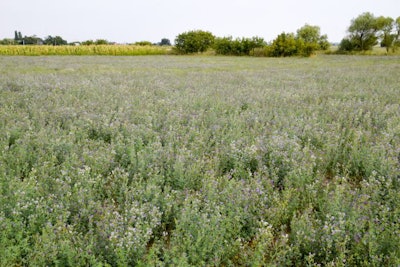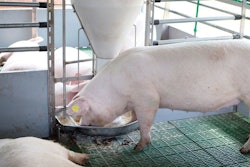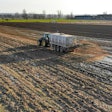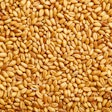
USDA researchers explore use for concentrated alfalfa protein after developing extraction process
Alfalfa could prove useful as a source of sustainable, plant-based protein across a variety of livestock species, according to emerging research by the U.S. Department of Agriculture’s (USDA) Agriculture Research Service (ARS) — it just requires an extra dash of creativity.
Alfalfa needs less fertilizer than corn and even helps recondition soils when used in crop rotations, according to Deborah Samac, a plant geneticist with USDA-ARS. It’s also a potential source of quality protein in animal diets, but it’s rarely refined for use beyond its traditional application as hay.
Research funded by the Minnesota Department of Agriculture has begun to explore potential unconventional applications, spurred, Samac said, by a need to make alfalfa more attractive to producers in the wake of a law that requires farmers to plant perennials in buffer zones surrounding public waterways.
Non-lodging alfalfa that can grow for more than two months without falling over is one option, Samac said, but needed a clearer path to profitability. USDA had already developed a leaf stripper that could isolate the protein-rich alfalfa leaves from the stems, which tend to be high in fiber, and other research had shown that “juicing” the leaves resulted in a concentrate that contained more than 50% protein. The question, Samac said, is what to do with it.
Alfalfa protein concentrate contributes to skin and egg pigmentation, which suggests promise for the poultry industry, Samac said. But aquaculture has also taken an interest, and early work to introduce alfalfa-derived protein to certain species of fish looks promising.
In yellow perch, Samac said, ARS has successfully replaced fishmeal with the alfalfa protein to good effect. The researchers have also tested low levels of the protein in trout, which also accepted the unusual diet with no ill effects. Research is ongoing to determine the optimum inclusion of the alfalfa protein in trout and salmon diets.
Researchers are also examining the potential health benefits of alfalfa in aquaculture, such as whether it could be used to reduce inflammation or if some of its antimicrobial properties could be enhanced. Some experiments have tried to increase the amount of fatty acids available in the alfalfa. However, this requires genetic modification, Samac said, and may not be acceptable among target consumers.
While the research suggests alfalfa concentrates are safe to feed to multiple species — fish, poultry and swine are on the table — commercial availability is another matter, Samac said. While a few companies have expressed interest in the “juicing” technology, the concentrated protein must be imported into the U.S.
“I think it would be a huge opportunity for a U.S. company to get into this,” Samac said.

















